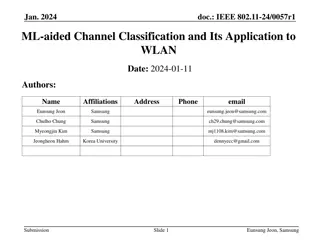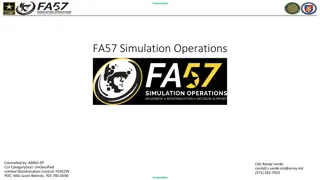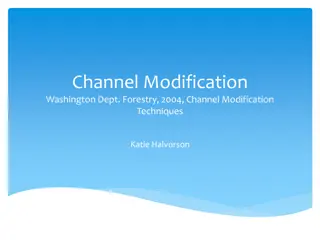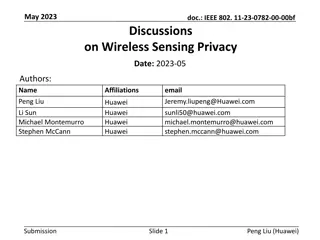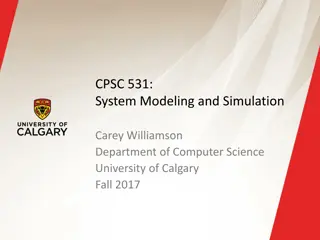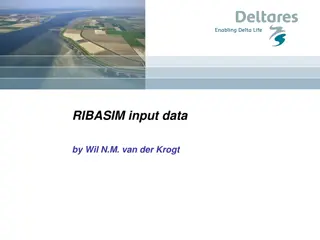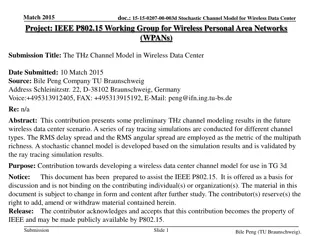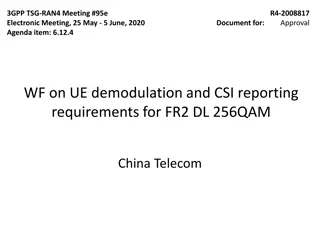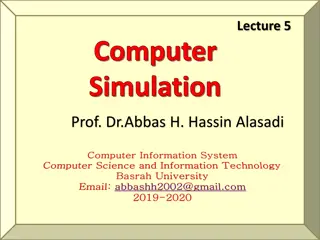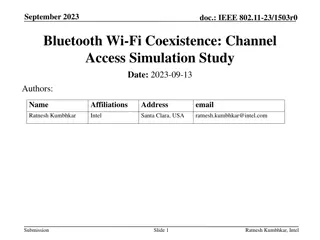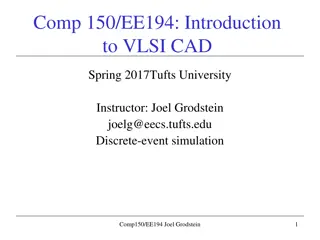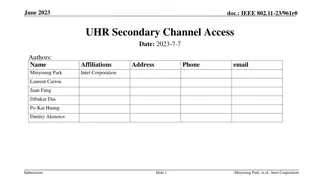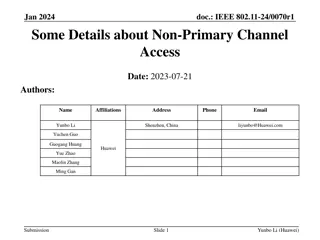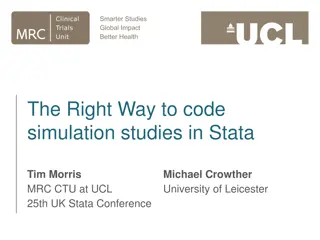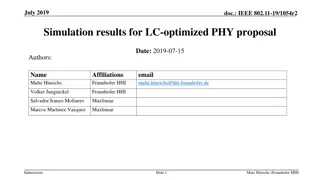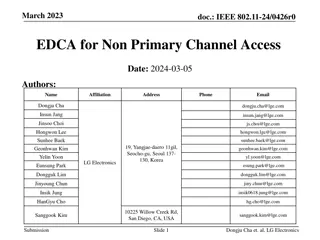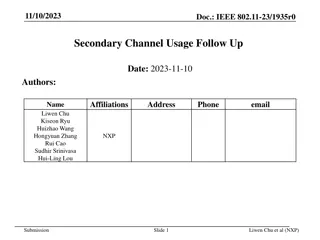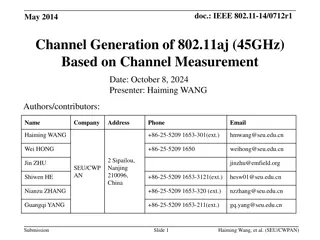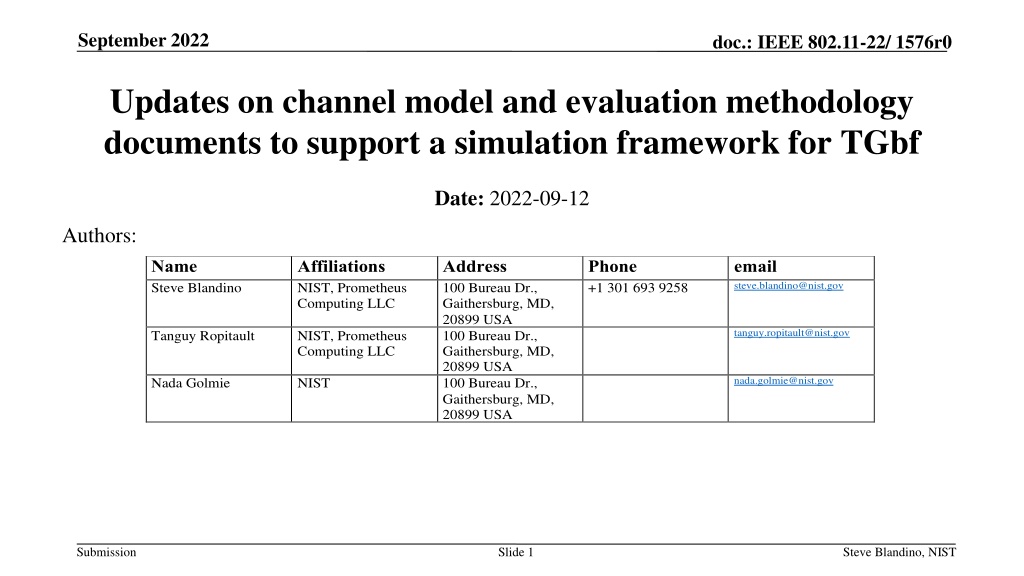
Updates on IEEE 802.11-22 Channel Model and Evaluation Methodology
"Explore the latest updates in the channel model and evaluation methodology documents supporting a simulation framework for TGbf in IEEE 802.11-22. Details include proposed changes, support for bi/multi-static scenarios, and more. Presented by Steve Blandino from NIST and Prometheus Computing LLC."
Download Presentation

Please find below an Image/Link to download the presentation.
The content on the website is provided AS IS for your information and personal use only. It may not be sold, licensed, or shared on other websites without obtaining consent from the author. Download presentation by click this link. If you encounter any issues during the download, it is possible that the publisher has removed the file from their server.
E N D
Presentation Transcript
September 2022 doc.: IEEE 802.11-22/ 1576r0 Updates on channel model and evaluation methodology documents to support a simulation framework for TGbf Date: 2022-09-12 Authors: Name Steve Blandino Affiliations NIST, Prometheus Computing LLC Address 100 Bureau Dr., Gaithersburg, MD, 20899 USA 100 Bureau Dr., Gaithersburg, MD, 20899 USA 100 Bureau Dr., Gaithersburg, MD, 20899 USA Phone +1 301 693 9258 email steve.blandino@nist.gov tanguy.ropitault@nist.gov Tanguy Ropitault NIST, Prometheus Computing LLC nada.golmie@nist.gov Nada Golmie NIST Submission Slide 1 Steve Blandino, NIST
September 2022 doc.: IEEE 802.11-22/ 1576r0 Abstract In [1], an example of link level simulation using ray tracing channel at 60GHz in indoor scenario is presented and discussed. In [2], an open-source mmWave suite of tools (DMG/EDMG) has been presented, as well as a 60GHz channel model for representing sensing scenarios [3]. In [4] a common framework to compare TGbf proposals has been proposed. Submission Slide 2 Steve Blandino, NIST
September 2022 doc.: IEEE 802.11-22/ 1576r0 Proposed changes Channel model [5] Support for bi/multi-static Evaluation Methodology [6] Option to evaluate scenarios using phased antenna arrays Include bi-static scenario Submission Slide 3 Steve Blandino, NIST
September 2022 doc.: IEEE 802.11-22/ 1576r0 SP Do you support modifying the official channel model document IEEE 802.11 (21/0782r3) as IEEE 802.11 (21/0782r5) by adding the section 4.3 Living Room Channel Model Mono/Bistatic/Multi-static, section 7.3 Channel Data for Bi-Static-Directional Sub-Scenario and section 7.4 Channel Data for Isotropic Sub-Scenario? Submission Slide 4 Steve Blandino, NIST
September 2022 doc.: IEEE 802.11-22/ 1576r0 SP Do you support modifying the official evaluation methodology document IEEE 802.11 (21/0876r3) as IEEE 802.11 (21/0876r5) by adding the option to evaluate scenarios using phased antenna arrays and by adding Section 2.4 Scenario 3: Bistatic indoor living room Submission Slide 5 Steve Blandino, NIST
September 2022 doc.: IEEE 802.11-22/ 1576r0 References [1] 11-21-0352-01- WLAN sensing link level simulation - follow ups.pptx [2] 11-21-0746-01-00bf-q-d-simulation-modeling-framework-for-sensing.pptx [3] 11-21-0747-01-00bf-a-preliminary-channel-model-using-raytracing-to- detect-human-presence.pptx [4] 11-22-0803-00-00bf-dmg-edmg-link-level-simulation-platform [5] 11-21-0782-04-00bf-channel-models-for-wlan-sensing-systems.docx [6] 11-21-0876-04-00bf-11bf-evaluation-methodology-and-simulation- scenarios.doc Submission Slide 6 Steve Blandino, NIST



